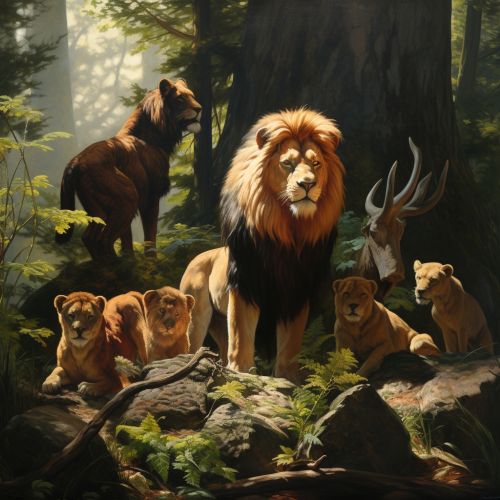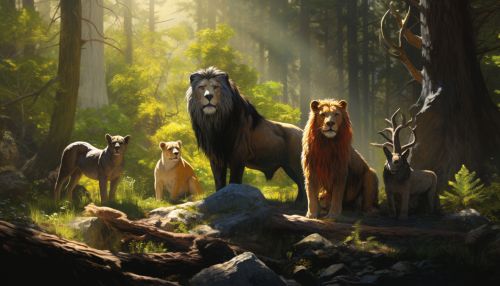Carnivora
Introduction
The order Carnivora (from Latin, meaning "meat eater") is a diverse group of mammals that includes more than 280 species worldwide. These animals are characterized by their specialized teeth and claws, which they use for hunting and consuming prey. Carnivora includes some of the most iconic and well-known animals, such as lions, wolves, and bears.
Classification and Evolution
Carnivora is divided into two main suborders: Caniformia (dog-like carnivores) and Feliformia (cat-like carnivores). These two groups diverged approximately 42 million years ago during the Eocene epoch. Caniformia includes families such as Canidae (dogs and wolves), Ursidae (bears), and Mustelidae (weasels and otters), while Feliformia includes Felidae (cats), Hyaenidae (hyenas), and Viverridae (civets and genets).


Anatomy and Physiology
Carnivores are characterized by their adaptations for a predatory lifestyle. These include sharp, pointed teeth for tearing flesh, and powerful jaws for killing prey. Many carnivores also have keen senses of sight, smell, and hearing, which they use to locate and stalk their prey.
Diet and Hunting Behavior
As their name suggests, carnivores primarily consume meat. However, many species are opportunistic and will also eat fruits, vegetables, and other types of food when available. Hunting strategies vary widely among different species and can include stalking, chasing, and ambush tactics.
Reproduction and Life Cycle
Carnivores have a variety of reproductive strategies, ranging from solitary individuals who mate only once a year to social species that live in groups and mate multiple times per year. Most carnivores give birth to live young, which are often helpless at birth and require parental care.
Conservation
Many species of carnivores are threatened by habitat loss, hunting, and other human activities. Conservation efforts for these animals often focus on protecting their habitats and regulating hunting practices.
